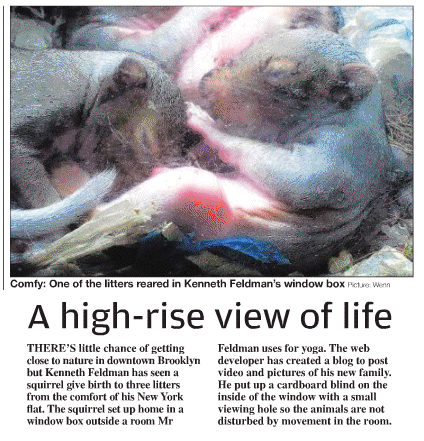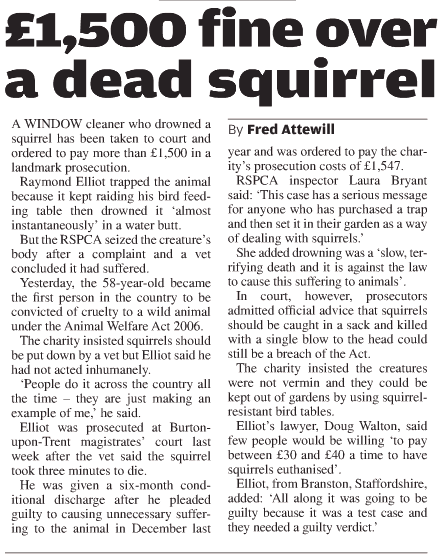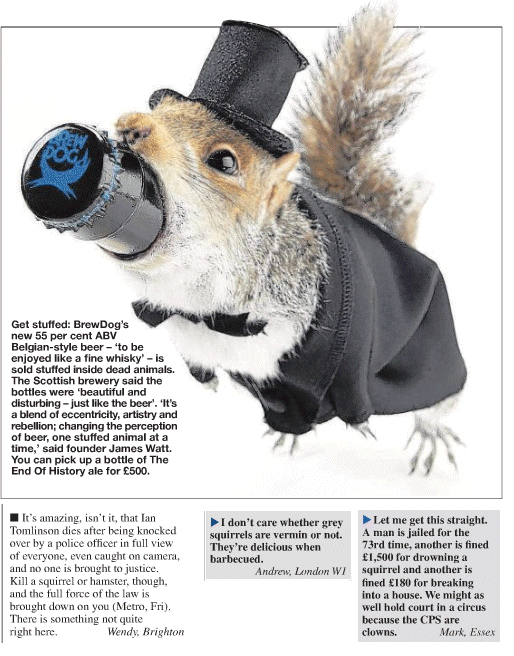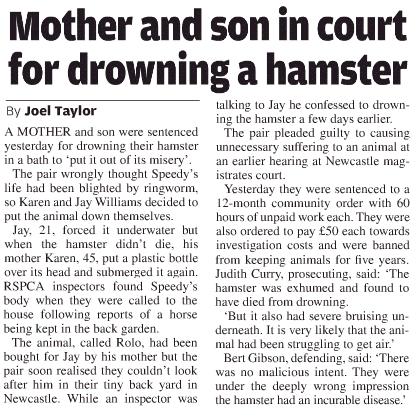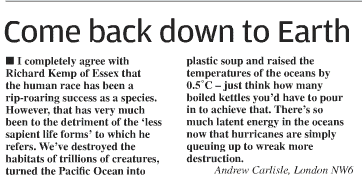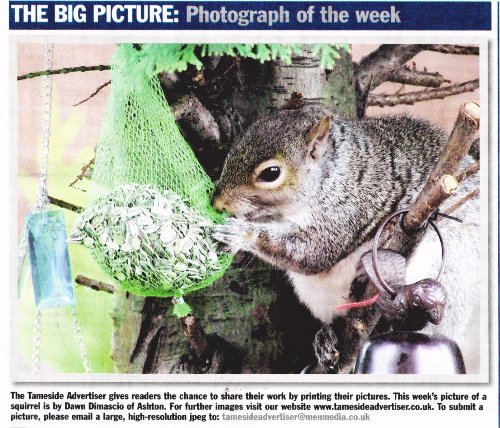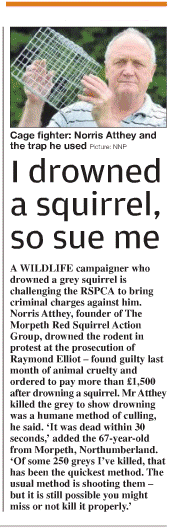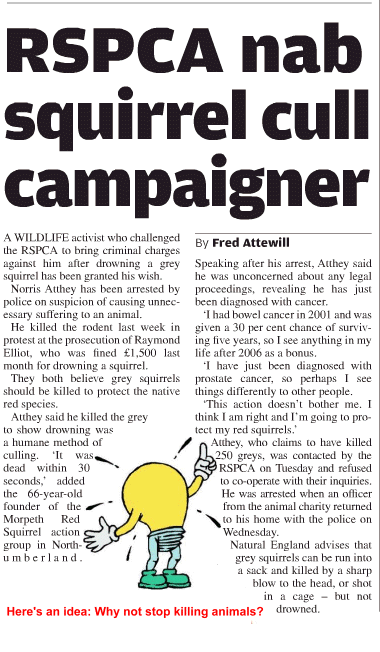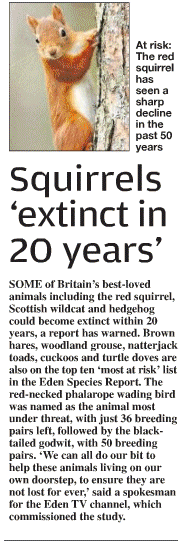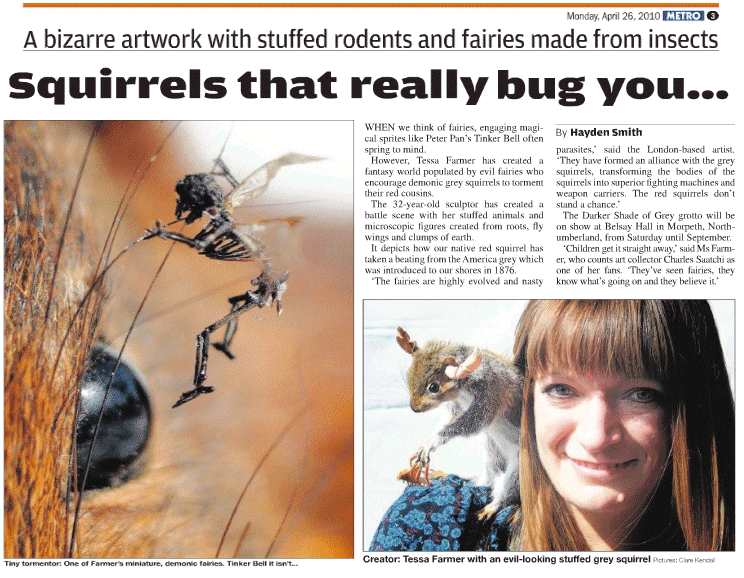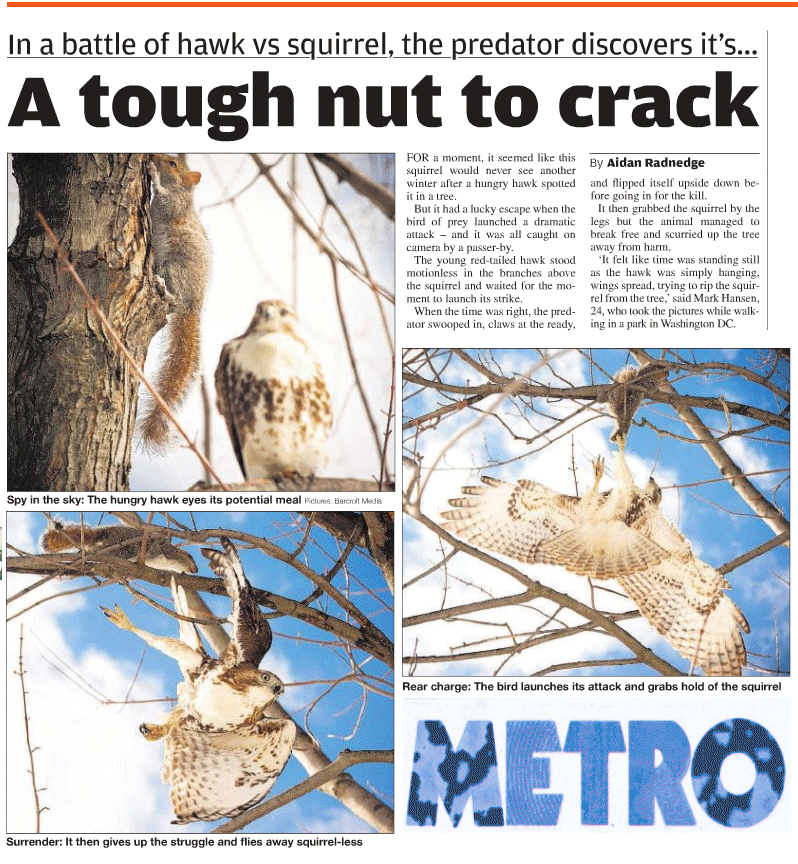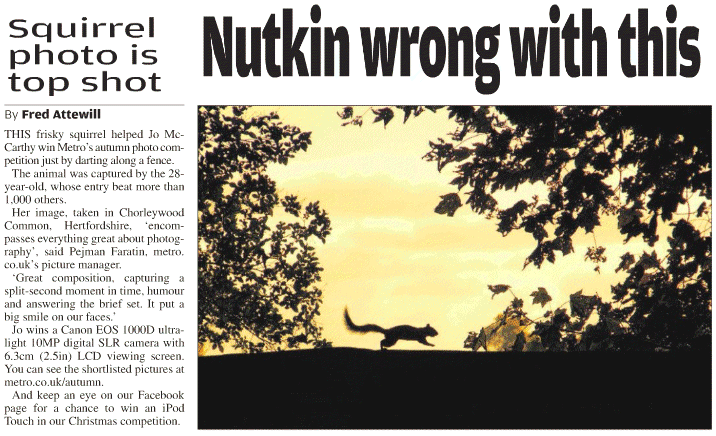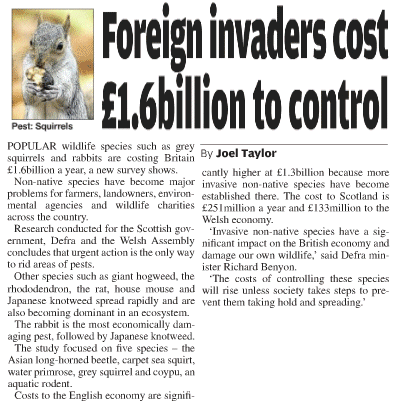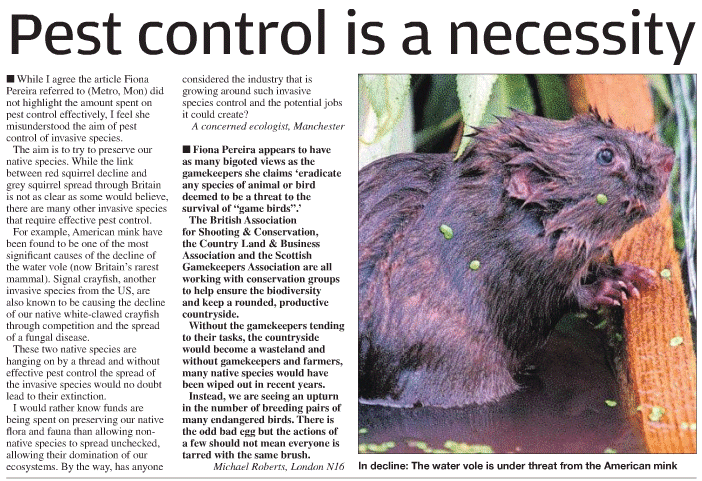NEWS
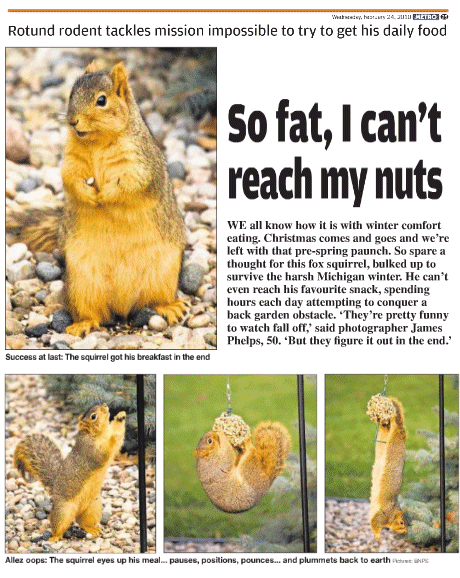
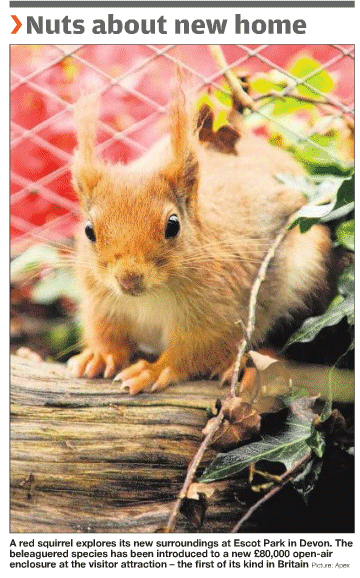
Non native mammals {note there is also a section on damage complaints}
Q. I have a grey squirrel in my loft, what can I do about it?
A. The grey squirrel is an introduced species which is now common throughout most of England. However, they may become a nuisance where they gain access to buildings. Cage trapping followed by humane dispatch, and proofing access points are the methods normally recommended for use in roof spaces. Control can either be carried out by private individuals, other occupiers or a pest control contractor. It is an offence to release or re-release grey squirrels or other non-native species (if they are not already present in the wild or if they are listed on Schedule 9 of the Wildlife & Countryside Act 1981) into the wild. This means that if you capture a grey squirrel it must be humanely killed. The Environmental Health Department of the Local Authority may also offer a service which is usually chargeable. A licence is not required to trap grey squirrels, but it is illegal to release one once caught without a licence. Further advice is available in the leaflet:
Download TIN056 Urban grey squirrels
Download WML-A03 Application form for release of non-native species
Q. Do I need a licence to keep grey squirrels, mink and coypu?
A. Yes a licence is required. Under Section 8 of Destructive Imported Animals Act 1932 (as amended) the above non-native mammals can only be kept in captivity with a licence for exhibition, scientific research or other exceptional purposes. An application form can be downloaded or you can contact the Wildlife Licensing Unit on 0845 6014523 or email: wildlife@naturalengland.org.uk.
FAQ version Jan 10 40
Download WML-A04 Application form to keep non-native species please note there is a charge for a licence to keep coypu
Q. Do I need a licence (even if I represent a rehabilitation centre) to release into the wild grey squirrels and Muntjac deer (or other species listed on Schedule 9 of the Wildlife & Countryside Act (as amended)) after they have been rehabilitated (following injury)?
A. Yes, grey squirrels and Muntjac deer are not native to Great Britain and their release into the wild is prohibited by section 14 of the Wildlife and Countryside Act 1981 (as amended). This section of the Act also prohibits the release of certain animals which are already established in the wild in Great Britain. In some circumstances the release of non-native species may be authorised under a licence. An application form can be downloaded or you can contact the Wildlife Licensing Unit on 0845 6014523 or email: wildlife@naturalengland.org.uk.
Download WML-A03 Application form for release of non-native species
Q. What does 'into the Wild' mean?
A. The meaning of release or escape 'into the wild' in section 14 of the Wildlife and Countryside Act 1981 (as amended) may, at first, appear quite straightforward. Where this concerns a release into the wider countryside this is indeed the case. Any release of a non-native species or species listed in Schedule 9 into the wider countryside, where it will be unconstrained and free to roam, will be considered a release into the wild.
However, where a release is into an enclosure designed to contain the released species this may, nonetheless, constitute a release into the wild. Factors relevant to determining if such a release is 'into the wild' or not, and therefore whether section 14 applies, are:
-
Security of the enclosure
-
Size of the enclosure relative to the ecological requirements of the species released.
-
Degree of control exercised by the species' 'keepers'.
-
Nature of the area contained within the enclosure.
-
Permeability of the enclosure boundary to other wild species.
Wildlife Management Songbird Survival Grey Squirrels
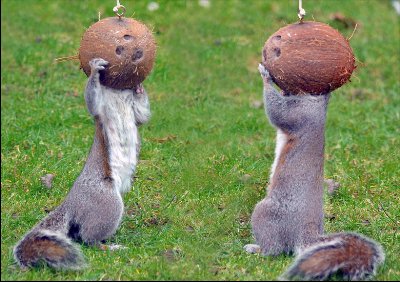
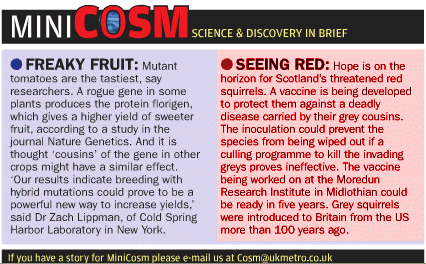

|
|||
| About Mr Swan's vermin. Grey squirrels are only vermin because
mankind says so- they are actually doing what evolution asked them to do
- reproduce and exploit a niche - which they do successfully. I suspect if
Mr Swan checked his geneology he'd find he was not indigenous either. To
cull a population to zero is actually very ignorant of how
population dynamics works
- because decimation of one species has an effect upon another. His views
are speciesist as Prof
Peter
Singer has said - if we had suggested culling black people has vermin,we'd
rightly be called racist. Humans get angry when a species is successful and
upsets our applecarts - the solution is to be smarter than the squirrel -
not kill it. If Mr Swan wishes to avail himself of the facts he might check
www.medlockandtame.org.uk/grey-squirrel.html And as for vermin - there are a few human beings where I live that might be so labelled- shall I go and murder them - or will the police stop me? The RSPCA is upholding the law - it is not their fault that the law makes an ass of itself by being inconsistent. |
|||
|
|||
 |
|||
|
|
||
Dear Ed, Please can you let Mr Atthey know that I would be pleased to drown him to prove that it is a humane way of killing,failing that I would be happy to fund the RSPCA's prosecution of such an ignorant destroyer of life. People seem to be under the impression that culling is necessary. If Mr Atthey bothers to check www.medlockandtame.org.uk/grey-squirrel.html he might find out why it is that he is totally at odds with population dynamics - a term,of which I am sure he has never heard. |
|||
| Dear NE, The metro reports this week on the case
of Norris Atthey who has been prosecuted by the RSPCA for drowning squirrels.
The report ends by quoting Natural
England's methods of dispatch for the grey squirrel: Hit on the head
with a hammer or shot in a cage.
http://medlockandtame.org.uk/squirrel2.html I would like to know how NE explains this with reference to the following article: http://medlockandtame.org.uk/grey-squirrel.html which indicates that culling squirrels is not only unecessary but is actually capable of impacting upon other species in a negative way because it is not taking account of the predator-prey interaction between species.
Sir Robert May's research upon this has shown that ignorant culling
of one species can decimate other species in the food web. http://members.fortunecity.com/templarseries/rhythm.html
Anyone who does not understand Robert May's research should NOT be
advising on how to control populations of creatures - quite aside from the
ethical considerations of killing a conscious animal - one may ignorantly
be INCREASING a problem by taking simple knee-jerk reactions to a perceived
"vermin" species. |
| On Thu, 26/8/10, Campbell, Sue (NE)
<Sue.Campbell@naturalengland.org.uk> wrote: From: Campbell, Sue (NE) <Sue.Campbell@naturalengland.org.uk> Subject: Grey Squirrels To: templarser@yahoo.co.uk Date: Thursday, 26 August, 2010, 8:03 Dear Mr Borrell Thank you for your email enquiry regarding Grey Squirrels. The grey squirrel is an invasive non-native species, which has had a significant negative impact upon native red squirrel populations, largely through the transmission of the squirrelpox virus (SQPV) which causes severe clinical disease and mortality in red squirrels but has no apparent effect on greys, but also through direct and indirect competition. Okay - where there are no red squirrels there is no chance of infection or competition - this is the case in the area where I live. Regarding "non- native species" - Chris Packham has indicated that were we to rid these isles of "non native species" we would have little left in the way of flora or fauna. It is a fact that many species are in the habit of moving around the world -and that is the way of nature. Interfering in this process,using ignorant culling strategies (quite apart from ethical speciesist issues) can cause more problems than it solves,along the lines of my original mail which alluded to Robert May's work on Chaos Theory - if you are not apprised of Chaos Theory and it's implications for population dynamics then advice should not be being handed out to other agencies. The grey squirrel can also cause serious economic damage in woodlands and structural damage to properties.
Then steps should be taken to stop the damage happening - not killing
an animal which has a perfect right to live. If we took the attitude that
hoodies vandalise cars and property and so should be hit on the head with
a hammer or shot - I am sure no one in our society would take kindly to breaking
the law in such a fashion - though they may well see it as an antidote to
hoodies - it is seen to breach their human rights - as it is we do not afford
animals the same rights - this is a gross oversight of many of the so called
"conservation agencies" who fail to see that their are many non-fatal solutions
to problems caused by animals. That is - if the grey spreads a disease -
then kill the disease - not the animal - this is what we would do in a human
population - why deny animals the same capacity to live?
The Governments approach to grey squirrels in England’s woodlands (which NE supports), is set out in ‘Grey Squirrels and England’s Woodlands: Policy and Action’. This document can be found at http://www.forestry.gov.uk/greysquirrel. This policy does not support the indiscriminate killing of grey squirrels but does support the control of grey squirrels where a critical threat exists such as impacts on biodiversity, environmental, economic or social interests. This includes the impact on remaining red squirrel populations in England. Chris Packham reported himself on the red population showing that they can in fact be held in quarantine from greys - in the places where they remain, they can be protected from infection without resorting to killing greys - if your activities are supported or instructed from central government - then it is to they I will approach to change their minds - ironically Sir Robert May is/was their advisor.
NE is aware of a number of historic cull efforts which have been applied
on a large-scale. During World War II and for a number of years subsequently
attempts to control the grey squirrel were introduced, which was swiftly
followed by the Bounty Scheme introduced in 1953, which you have referred
to and a number of other schemes and initiatives following on from these.
However, past attempts to control the grey squirrel had no systematic national
or regional strategy. Without a co-ordinated response and clear aims there
was little chance of success. So what you are saying is that the indiscriminate killing of greys where they pose no threat to reds is unecessary - then why not tell the papers that? The fact is we now have vigilante grey killers (including some on my own patch) that think they are doing a public service why killing "vermin". Such demonisation of animals is unhelpful when conservation societies are trying to educate people in how to look after flora and fauna - I do not think it helps anyone to pass a message on which says "kill with impunity" when such people do not have the facts. Grey squirrels are controlled in GB by cage trapping or spring (lethal) trapping (regulations laid down in the Wildlife & Countryside Act 1981 as amended and the Spring Traps Approval Order 1995), shooting (sometimes in conjunction with ‘drey poking’) or warfarin poison baiting (provisions laid down by the Grey Squirrels (Warfarin) Order 1973, the Control of Pesticide Regulations 1986 and the EU Plant Protection Products Directive 91/414/EEC). Whilst under the control of man (e.g. in a trap) grey squirrels are a ‘protected animal’, in the terms of the Animal Welfare Act 2006, and are protected against unnecessary suffering. As you have pointed out NE’s Technical Advice Note TIN056 does point out that grey squirrels can be run into a sack and killed by a sharp blow to the head as part of the cage trapping methodology see http://naturalengland.etraderstores.com/NaturalEnglandShop/TIN056. This advice note has been developed in association with the relevant national experts, governmental and non-governmental bodies. Thank you for your information - I can see I must approach the relevant government bodies. Please try and keep in mind what I have said as I will what you have. http://www.medlockandtame.org.uk/grey-squirrel.html
Yours sincerely Website: www.naturalengland.org.uk We are here to secure a healthy natural environment for people to enjoy, where wildlife is protected and England’s traditional landscapes are safeguarded for future generations. In an effort to reduce Natural England's carbon footprint, I will, wherever possible, avoid travelling to meetings and attendvia audio, video or web conferencing. Access to Natural England publications and data are provided under our standard Terms of Use which can be viewed at http://www.naturalengland.org.uk/Images/TermsofUse_tcm6-14835.pdf Note: there is no need to sign or otherwise confirm acceptance of these terms. |
|
| Please could you forward this article to your mammal expert that was
on Page 24 of today's New Scientist:
This shows what happens when man starts messing about with animal populations assuming some to be vermin and some to be on the verge of extinction and tries to exploit one species to sustain another - it is much like messing about in the stock exchange - another bunch of people who do not understand the maths of their own system and thus cause massive crashes - without knowing how they happened - chaotic dynamicists are very well aware of how they happen -ignorance of the dynamics of the system. http://members.fortunecity.com/templarseries/chaosflr.html http://members.fortunecity.com/templarseries/rhythm.html
Conservation and compassion: First do no harm •25 August 2010 by Marc Bekoff •Magazine issue 2775. Subscribe and save •For similar stories, visit the Comment and Analysis Topic Guide In putting conservation into practice, we often cause great suffering to animals. Marc Bekoff argues that we need a new ethical perspective
BLACK-footed ferrets were once widespread across the Great Plains and the inter-mountain west of North America. Then decades of habitat loss and disease pushed them to the brink of extinction. In the mid-1980s, with only 18 individuals left in the wild, the entire population was taken into captivity to establish a captive breeding programme. Reintroductions into the wild began in 1991, and the population is now around 750. Some consider the black-footed ferret recovery programme to be a conservation success story. But that success has come at a heavy price. Captive-bred ferrets need to be taught to hunt before they can be released into the wild. This is done by feeding them golden hamsters and black-tailed prairie dogs. In 2008 and 2009, captive ferrets were fed 7300 golden hamsters, 5100 of them offered alive, plus 2466 black-tailed prairie dogs, 1480 offered alive, according to figures supplied by the programme. The hamsters are bred solely to be practice prey. Some defend the use of hamsters and prairie dogs as prey on the grounds that they are not endangered, and are therefore disposable and replaceable. I disagree. Like humans, these sentient rodents have neural structures that are important in processing emotions. Surely they endure pain and suffering as the ferrets hone their killing skills on them. Ethics suggest this project be more carefully evaluated. In view of its inhumane training protocol, I would argue for its termination. There are behavioural studies in which animals are made to interact with inanimate objects. Something similar could have been tried to train the ferrets. The use of prey species to hone the hunting skills of predators is just one of the issues that will be discussed next week at a long-overdue meeting in Oxford, UK. Called Compassionate Conservation, the meeting will bring together two disciplines that are often perceived as mutually exclusive: animal welfare and conservation. Among the questions on the table will be: Should we kill for the sake of conservation? Can conservation biologists do good science, saving species and ecosystems while also being compassionate? Can people who value individual lives work with those who are willing to sacrifice lives for the good of a species or an ecosystem? What role should animal sentience play in such decisions? These are very practical issues. For example, we often move animals from one place to another to "restore" ecosystems, and in doing so harm individuals. Wolves have been reintroduced into Yellowstone national park and Canadian lynx to Colorado in the full knowledge that some of them will die "for the good of their species". Other animals have died too: in one area of Yellowstone more than 90 per cent of coyotes have been killed as a result of the reintroduction of wolves.
Compassionate conservation mandates that individual lives matter and would
argue against these reintroductions. It also warrants against playing the
numbers game - arguing, for example that the deaths of thousands of hamsters
is a price worth paying for the survival of a few black-footed ferrets. Likewise,
we should provide care for all oiled birds even if they do not belong to
an endangered species, and factor compassion into decisions about whether
to exterminate alien species when they compete with native ones.
The guiding principles of compassionate conservation are: do no intentional harm; respect all life; treat all individuals with respect and dignity; and tread lightly when stepping into the lives of animals. This is not an easy sell. Many researchers believe allowing subjective feelings for animals to influence their decisions - even if driven by ethics - invariably taints their science. Compassion, sentimentality and anthropomorphism have no place in conservation, the argument goes. Not all conservation biologists agree. Renowned field biologist George Schaller, interviewed by New Scientist (7 April 2007, p 46), summarised years of ground-breaking research on behavioural ecology and conservation thus: "Without emotion you have a dead study. How can you possibly sit for months and look at something you don't particularly like, that you see simply as an object? You're dealing with individual beings who have their own feelings, desires and fears. To understand them is very difficult and you cannot do it unless you try to have some emotional contact and intuition. Some scientists will say they are wholly objective, but I think that's impossible." It's not radical to ask difficult questions about our interactions with animals. In fact, it is in the best traditions of science to factor ethics into our practices. Human activities that cause intentional suffering and death in the name of conservation demand careful scrutiny. However, I accept that we need to come to practical solutions with which everyone is satisfied. The question then becomes, what ethical trade-offs need to be considered, and which are negotiable and which not? I would argue that we need to focus on solutions that advocate the well-being of individual animals and not allow them to be harmed or killed for the good of their own or other species. Compassionate conservation is no longer an oxymoron. Ethics must be firmly implanted in conservation biology, even if doing so moves us outside our comfort zones and causes some projects to be put on hold or abandoned.
Ethics must be firmly implanted in conservation biology even if it moves us out of our comfort zones Marc Bekoff is professor emeritus of ecology and evolutionary biology at the University of Colorado, Boulder, and on the advisory board of Project Coyote, which promotes "educated coexistence between people and coyotes". His latest book is The Animal Manifesto: Six reasons for expanding our compassion footprint (New World Library) |
Supermarket backs squirrel meat sales amid protest |
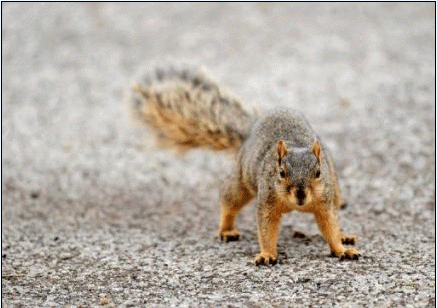
A supermarket has defended selling squirrel meat as a "sustainable" form of food, amid protests by animal activists who accused him of cashing in on a "wildlife massacre". A Budgens supermarket in north London says its squirrel meat has proved popular Enlarge photo ."In a few years' time, it's going to become like rabbit," said Andrew Thornton, who introduced squirrel meat into his branch of the Budgens supermarket in north London this year. "Squirrel is a very sustainable form of meat," he told AFP on Thursday, explaining that while it takes 15 tons of grain to produce one ton of beef, "squirrels feed from nature -- there are too many of them around." Squirrel meat was once a common feature of the British diet and in recent years has returned, being sold by speciality game dealers and restaurants and endorsed by celebrity chefs, who have cooked up recipes for squirrel ragout and squirrel offal skewers. It is increasingly seen as acceptable to eat grey squirrels, whose population has exploded since being introduced here in the 19th century. Some groups now advocate culling grey squirrels to protect the domestic red squirrel, which is now a protected species. Although he is currently out of stock, Thornton said he had been selling about 10 to 12 squirrels a week, sourced from a game supplier in Suffolk, eastern England, and "we've had a number of customers asking for it". His actions have provoked outrage from animal rights activists, however. "Culls of thousands of grey squirrels by so-called conservation groups to boost populations of red squirrels are irrational, inhumane and destined to fail, so it is very sad that Budgens are allowing profit to be made from wildlife massacre," said Juliet Gellatley of Viva (Vegetarians International Voice for Animals).
|
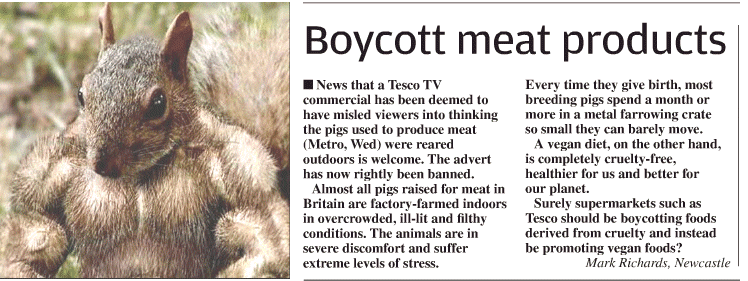
|
|
| Dear Ed, DEFRA minister Richard Benyon seems to be unaware of how Darwin's survival of the fittest works. Instead of spending £1.6 billion on trying to "keep pests under control",which means exterminating wild species,why not accept that they are the fittest species and work with nature. Culling works against nature. If DEFRA wishes to conserve native species then they ought to lose the concept of "native" and just try and maintain a balance of species,but like Chris Packham said - perhaps the panda can't be saved no matter what we do. Stop messing with nature and leave the fittest to survive. |
|
|
|
| Dear Ed,
I fully expected Fiona Pereira's letter to receieve a backlash,but she is entirely correct. I wonder why it is that the concerned ecologist thinks we need to save "indigenous" species from "invasive" ones - if this is true,then why do people rile against the BNP who are only doing the same thing to human beings? A specieist policy of protecting one creature from another is against nature's "fittest for survival" and whilst I too would like to keep the voles and pandas who maybe threatened because of one reason and another,culling the threat is not the solution. This has been shown by other data and indicated by such notables as Sir Robert May. Details of this can be found at www.medlockandtame.org.uk/grey-squirrel.html. If people are so concerned about ecology - stop killing things! |
|
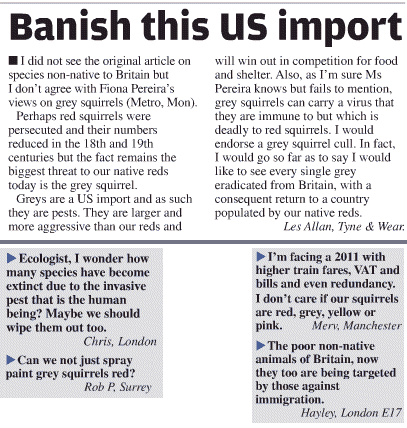 |
Dear Ed,
Could I please point Les Allan and other ignorant squirrel cullers in the direction of www.medlockandtame.org.uk/grey-squirrel.html so they can inform themselves of how population dynamics works and why they are causing more of a problem than finding a solution?
Dear Defra/Richard |
When a species is less successful - like the red squirrel - we help it out by culling greys - because they are "not from here". The stupid policy of trying to stop species diversification in their georgraphy is ill-conceived,as the human population knows no boundaries and we are not culled when we cross into other countries - indeed history shows the invader has conquered the indigenous population. The assumed notion of "pest" supposes that the invader is less welcome in all cases - and yet the Metro also reported on the Hoopoe showing up and the Advertiser reports on the population of Waxwings making a "welcome return". If culling is costing £1.6 billion,perhaps it is time to reconsider whether culling of foreign "invaders" is the correct strategy - since nature is always going to make the most successful "pest" do better than species we may "like " or wish to conserve. Note that "weeds" (whether indigenous or not) do better than plants - and yet they are "pests". The continued notion that species from outside a country are "invasive" is absurd when humankind has walked into all countries and devastated populations - animal and human - and claimed them as their own. Animals have perhaps more right to do so than do we - as they do not have to consider ethics or politics. Worse still - the DEFRA policy is not even informed from a mathematical perspective. The government advisor Sir Robert May did work on this very subject showing that culling can actually counter-intuitively INCREASE the population one is trying to cull. Indeed one contributor to the Metro made this very point [ http://www.medlockandtame.org.uk/grey-squirrel.html - John Bryant]. Chris Packham has suggested that trying to conserve species such as the Panda maybe fruitless as they may just not have what it takes to survive - perhaps the red squirrel is another such case. It is patronising to nature to assume we know best when clearly we do not - and clearly DEFRA know even less than Sir Robert May. I suggest that DEFRA takes a long hard look at whether trying to stop "invasive species" by culling is a correct strategem and whether £1.6 billion is better spent on protecting species that maybe threatened by less damaging methods - such as qurantining red squirrels which as proved effective in other cases. At the very least DEFRA seems ignorant of mathematical models and frontier research which shows that trying to fight nature is like Canute trying to hold back the waves - and it is better to try and protect your property from the waves rather than trying to stop the waves coming ashore. http://www.medlockandtame.org.uk/natnum.html http://templarseries.fortunecity.com/rhythm.html The simple idea that "something has invaded - let's kill it" is ignorant and a knee-jerk reaction to a complex notion. Please try and think with more complexity. |
|
| DEFRA response:
Dear Mr Borrell, Thank you for your email of 16 December about the economic impact of invasive non-native species on the British economy. The report, commissioned by Defra, the Scottish Executive and the Welsh Assembly, estimated that the cost of invasive non-native species to the British economy was £1.7billion per annum. This figure represents the wider costs to British society of invasive non-native species and not just the costs of culling incurred by Defra. The full report can be viewed on the non-native species secretariat website: www.nonnativespecies.org Non-native species are those that have been deliberately or accidentally introduced by humans to habitats outside their native range. The majority of non-native species are benign, however, a minority impact negatively on biodiversity or economic interests such as agriculture, forestry or fisheries. It is these invasive non-native species which are of primary concern. The introduction of invasive non-native species is considered to be a main direct driver of biodiversity loss worldwide. The Invasive Non-Native Species Framework Strategy for Great Britain is our comprehensive framework for tackling this issue. The fundamental principles of the GB Strategy are: prevention of introduction; early detection and rapid response to new introductions; and long term management of those already here. The strategy can also be found on the non-native species secretariat website. Yours sincerely Kevin Woodhouse Defra – Customer Contact Unit
Department for Environment, Food and Rural Affairs (Defra) |
|

